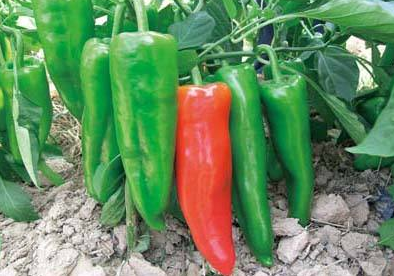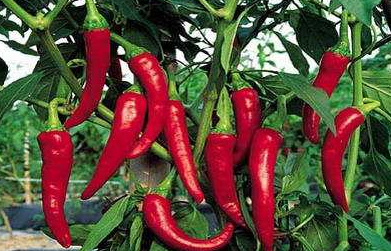Jindu Town Kwadu Township is located in the southeast of Weining County and is one of the demonstration bases for early-maturing vegetables in Weining County. It is located at 104°24′ east longitude, 26°43′ north latitude, 1490m above sea level, average temperature 16°C, the highest monthly average temperature is 23.2°C, the lowest monthly average temperature is 7.3°C, the total accumulated temperature is 5859°C, and the date is above 322d above 0°C. The date above 5% is above 290d. The annual rainfall is 899mm. The frost-free period is about 260d. The annual total radiation is 115.00kcal/cm2, h, and the annual sunshine is 1715.3h. The township is known as “natural greenhouse†in Weining County. It is suitable for early-maturing vegetable planting land of about 80hm2. The Weining County Government has long arranged the early-ripening vegetable demonstration project in Kwadu Township, focusing on the early-maturing cultivation of solanaceous vegetables, and promoting the promotion of other vegetable varieties. And new technology. After years of practice, the cultivation techniques of early-maturing peppers in the region were summarized. Effectively promote the development of local early-ripening vegetables, and make up for the current shortage of supply in the off-season. The cultivation techniques of early-maturing peppers in Kwadu Township are introduced as follows, for reference to planting early-ripening vegetables in high-altitude areas.
Pepper growth habit
temperature
The requirements for temperature in different growth stages of peppers vary. The optimum temperature for seed germination is 20-30 ° C. It can not germinate below 15 °C, and germination is inhibited above 35 °C. Pepper seedlings require higher temperatures, lower temperatures, and slower growth. The temperature that can be tolerated at the seedling stage is 10 to 38 ° C; the optimum temperature is 28 ° C. It is safer at 18-20 °C at night, and if it exceeds 30 °C and below 15 °C, it is unfavorable for stem and leaf growth and flower bud differentiation. The flowering result period is 21 to 26 ° C during the day and 16 to 20 ° C during the night. Below 10 ° C or above 35 ° C flower organ dysplasia, can not be fertilized to cause falling flowers and fruit. The temperature difference must be controlled within 15 °C throughout the growing period.
illumination
Pepper is a medium-light crop and does not require high light intensity. As long as the temperature is suitable and the nutrient conditions are good, the flower bud differentiation and flowering results can be performed. Strong light and high temperature are prone to viral diseases.
soil
Pepper is suitable for planting in neutral or slightly acidic soils at pH 5.6-6.8. Because the root system is underdeveloped, the soil is required to be well drained, loose, and fertile.
Moisture peppers are neither early nor resistant. In the seedling stage, the water is properly controlled to promote rooting to prevent the length of the seedlings. It is better to keep the ground and see the wet after flowering. Flower bud differentiation and fruit setting are preferably 55% soil moisture and 80% air humidity.

Construction and management of seedling hotbeds
Construction of seedling hotbed
The choice of seedbed. Choose a leeward sunny, easy to manage plot, and build a breeding seedbed.
The construction of seedling hotbeds. Digging a seedling warm pit with a depth of 50cm, a width of 1m and a length of not more than 10m, and mixing the fertile cattle, horses and other raw fat into the excrement in the bed pit. After the compaction, the car surface is about 20cm lower than the seedbed, and then covered with a layer. Thin soil mixed with fine manure.
Seedbed management
Sowing at the right time
Pepper seedlings have higher temperature requirements. The seedlings are not cold-tolerant, grow slowly at lower temperatures, and basically stop growing below 13 °C. Therefore, early-ripening peppers are generally suitable for sowing in the middle and late November. When sowing, spread evenly on the built seedbed, covered with a layer of thin soil mixed with fine manure. Then water to the seedbed to moisten, spray disinfectant (1% lime water, carbendazim, methyl thiophanate, etc.). Finally, bamboo poles are used as arches to cover the plastic film.
Temperature management
According to the temperature requirements of different growth stages of pepper, the temperature record (temperature and temperature inside the seedbed) is used to manage the temperature of the pepper seedbed. When the winter is cold, the temperature in the seedbed shed should be raised as much as possible. Or measures such as electric lamp heating to keep the seedlings safe for the winter, the temperature should be kept above 13 °C. If there is too much snow, pay attention to clear the snow on the shed to avoid damage to the arch shed.
Water management
Watering at the right time keeps the seedbed moist. Humidity should not be too high, proper control of water can promote its rooting, so that the stems of the seedlings are thick, the internodes are short, the roots are developed, and the side branches are early. Cultivate strong seedlings.
Refining
The seedlings grown in the hotbed of pepper are weakly resistant, and they are not suitable for the lower temperature of the outside when planting. Before planting, it is necessary to refine the seedlings to gradually adapt to the natural climate. 10~6d before the transplanting, the ends of the arch shed are ventilated for 5~6d, and the film is uncovered. After the film is removed for 5~6d, the field should be transplanted.

Field transplanting and field management
Site preparation
Choose well-drained, loose, fertile, slightly acidic soils. The land will be ploughed, the depth of the plow is 20~30cm, the straw and weeds are removed, and the soil is finely divided. Application of base fertilizer: fermented circle fertilizer 151300-22500kg/hm2, human excrement 15000kg/hm2 or cake fertilizer 750~1125kg/hm2, calcium content 300~345kg/hm2, potassium sulfate 150kg/hm2, urea 60-78kg/hm2.
Colonization
Pepper has a higher requirement for soil temperature (above 13 °C), and the colonization time is usually in early March. The temperature of the solanaceous vegetables in the area around the Kwadu River in Weining County was relatively high, and the density of early-ripening peppers was generally 67,500 nests/hm2. The opening ridge size is 120cm × 25cm, the belt distance is 120cm, and the socket distance is 25cm. Two rows of wrong nests were planted, and 3 seedlings were planted in each nest. The planting water should be poured before planting. When planting, the cover film, the membrane can be used to expose the seedlings or cover the membrane, and the membrane is broken and planted. After the planting, the root water is drenched.
Field management
Water management
Due to the severe drought in the area around the Kwadu River in Weining County, early-ripening pepper cultivation must be watered at the right time to ensure the normal growth of the pepper. Pay attention to flood control during the rainy season, because the area of ​​pepper leaves is small, the amount of transpiration is small, the rain is too much, the pollination rate is low, and pests and diseases are prone to occur. Water in the soil is prone to falling flowers and blight, and drainage work must also be done.
top dressing
Pepper topdressing is mainly based on nitrogen fertilizer and applied with phosphorus and potassium fertilizer. Generally, about 10% of urea freshwater fertilizer is applied at the time of planting. When the seedlings resumed growth, the same concentration of topdressing was applied 2 to 3 times during the results, and the compound fertilizer was applied in the period of 450-600 kg/hm2.
Pest control common diseases of peppers include deciduous sputum, viral disease, bacterial wilt, sclerotinia sclerotiorum, etc. The main cause of bacterial wilt in the Kwadu River area is that the fertilization should be light, and the spraying can be appropriately sprayed 0.2% to 0.3%. Bordeaux mixture (1 to 10d spray 1 time).
Harvest
According to the maturity of pepper, pepper can be divided into green ripening period and red ripening period. The ripening capsicum fruit has been fully grown, showing the characteristics of the variety, the color is green and lustrous, and it is the best harvesting period for early maturing peppers. It is best to choose harvesting on sunny days. Because the leaves of the pepper are fragile, it is easy to touch when picking. Broken leaves, picking in rainy days can easily cause disease transmission, and trampling the ground causes soil compaction, hindering the growth of roots. A proper amount of fruit is reserved for each harvest to suppress stems and leaves.
in conclusion
In the low-heat valley area of ​​Kwadu Town, Jinzhong Town, Weining County, the development of early-ripening pepper production has high economic benefits. According to several years of planting practice, the yield of early-ripening peppers increased by 9465 kg per hectare compared with conventional peppers, and the output value increased by 13,356 yuan.
Wound Care Dressing Pad,Pu Wound Dressing,Wound Dressing Sticker ,Care Dressing Sticker
Wenzhou Celecare Medical Instruments Co.,Ltd , https://www.wzcelecare.com